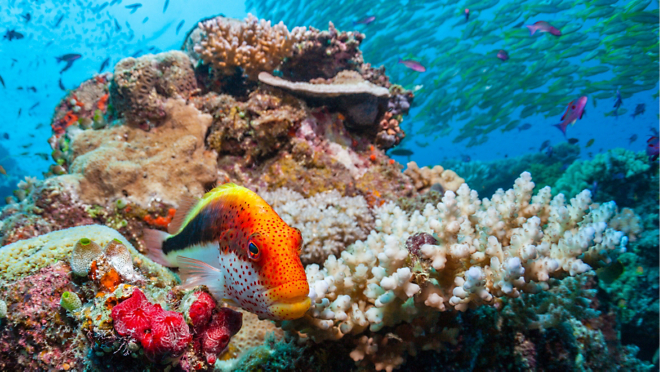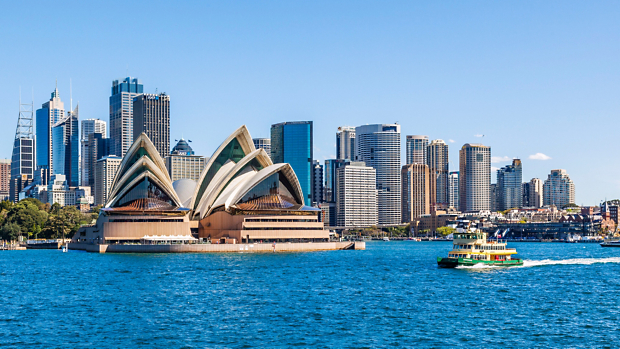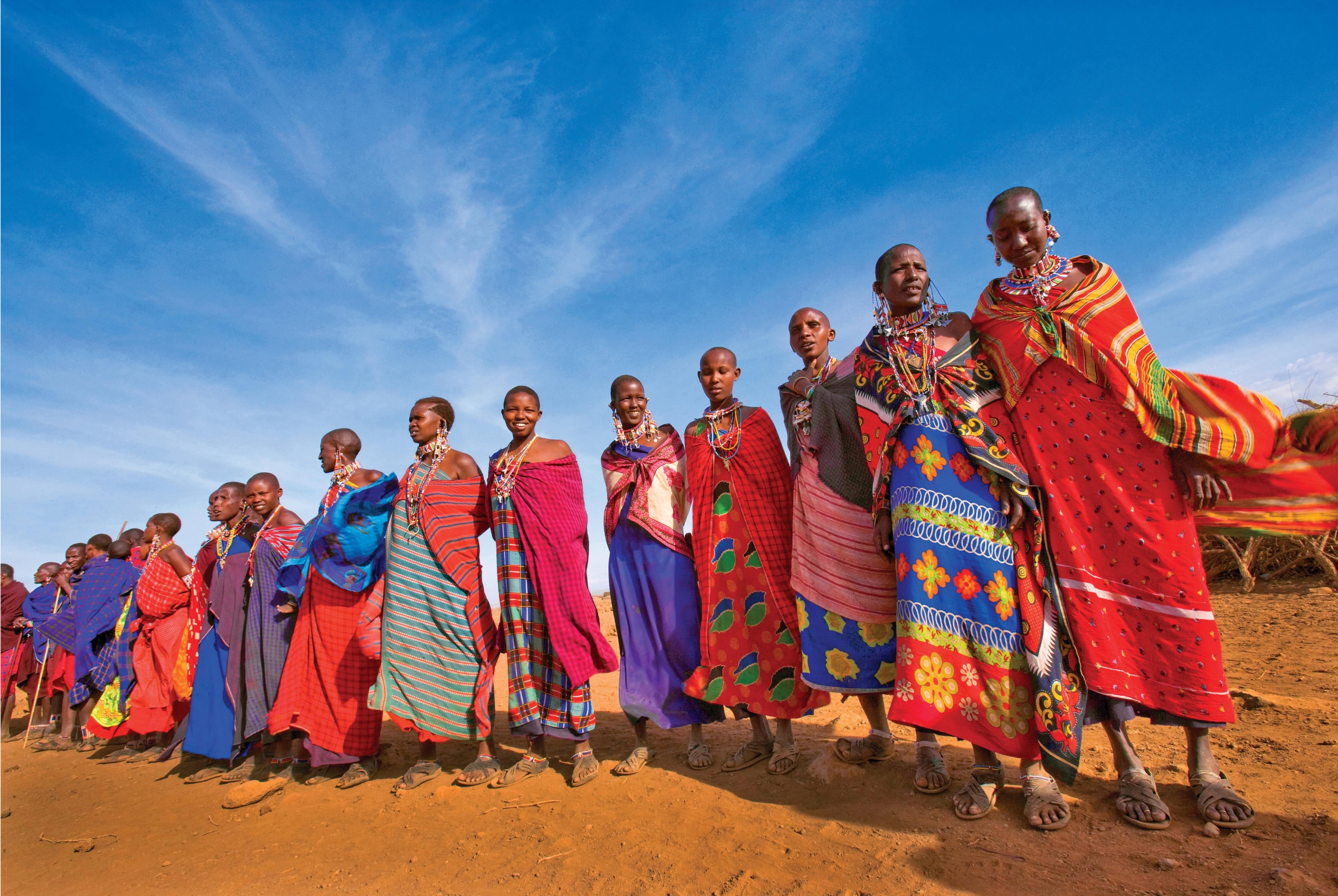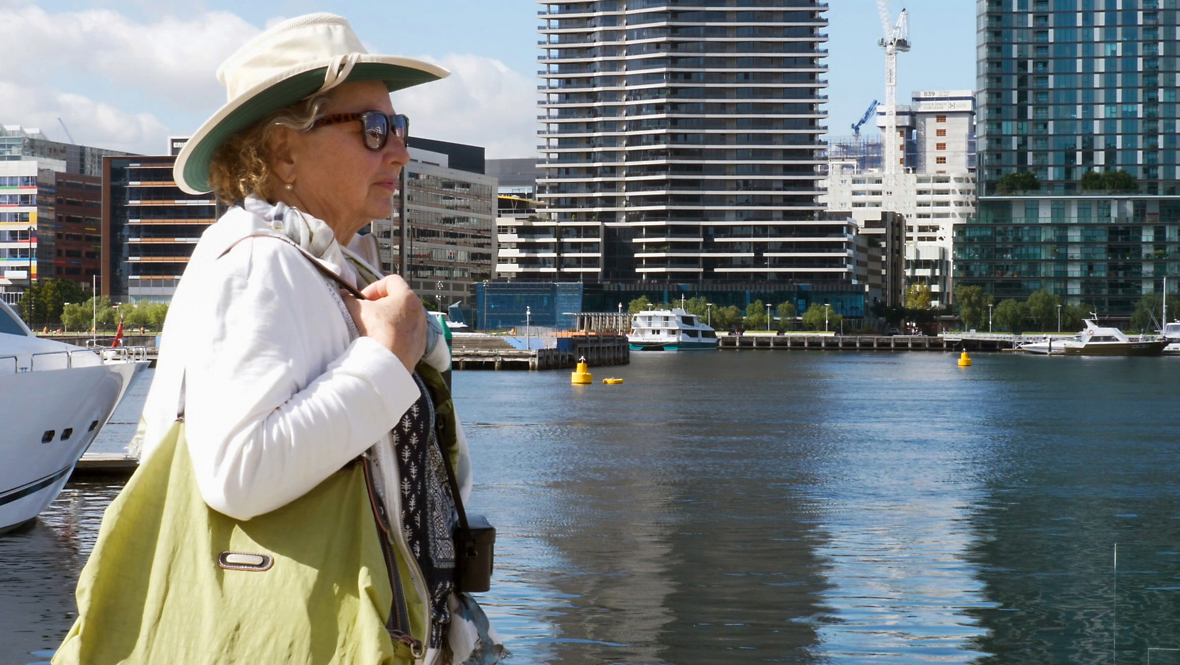You’re receiving this message because your web browser
is no longer supported
We recommend upgrading your browser—simply click the button below and follow the instructions that will appear. Updating will allow you to accept Terms and Conditions, make online payments, read our itineraries, and view Dates and Prices.
To get the best experience on our website, please consider using:
- Chrome
- Microsoft Edge
- Firefox
- Safari (for Mac or iPad Devices)

australia
Overseas Adventure Travel, the leader in personalized small group adventures, has been changing lives through travel since 1978. Our 3 Australia adventures will take your small group into the heart of a destination to venture where the big tour groups can’t. No matter which adventure you choose, O.A.T. always offers our travelers:
- Personalized travel experiences, with options to arrive early, add pre- or post-trip extensions, stopover in popular cities, and more.
- Small group of no more than 16 travelers, allowing us to take you off the beaten path and immerse you in local culture.
- Adventures tailored to the solo traveler, with FREE Single Supplements and 23,000 single spaces being offered in 2024.
- Expert Trip Experience Leaders, residents of the region you visit who will share their insights and bring your destination to life.
Dive into the challenges faced by Australia’s indigenous population and discover how this group has adapted to modern day customs while maintaining their ancient traditions. Cruise by private catamaran to the Great Barrier Reef for a day of swimming and snorkeling among a vibrant kaleidoscope of fish, coral, and sea stars. Watch the sun cast glimmering, golden shadows as it sets over Australia’s Uluru—Ayers Rock—the heart of the red, rugged Outback. Feel the pulse of Australia's cultural centers—from Melbourne to Sydney. You can experience all of this and more when you journey to Australia with O.A.T.
Your FREE Personalized Australia Travel Planning Guide
Your FREE Personalized Australia Travel Planning Guide is on its way
Want to continue learning about Australia? Return to our Australia destination page.
Go Back To AustraliaPlease note: To complete your registration, check your email—we sent you a link to create a password for your account. This link will expire in 24 hours.
Compare Our Adventures
Click 'Select to Compare' to see a side-by-side comparison of up to adventures below—including
activity level, pricing, traveler excellence rating, trip highlights, and more

Spend 14 days in Australia on
A South Pacific Odyssey: Australia, the Outback & New Zealand
O.A.T. Adventure by Land

Spend 15 days in Australia on
Ultimate Australia
O.A.T. Adventure by Land

Spend 6 days in Australia on
Pure New Zealand
O.A.T. Adventure by Land
Compare Adventures
Add Adventure
including international airfare
per day
*You must reserve the main trip to participate on this extension.
**This information is not currently available for this trip. Please check back soon.
You may compare up to Adventures at a time.
Would you like to compare your current selected trips?
Yes, View Adventure ComparisonAustralia: Month-By-Month
There are pros and cons to visiting a destination during any time of the year. Find out what you can expect during your ideal travel time, from weather and climate, to holidays, festivals, and more.
Australia in January & February
While the Northern Hemisphere is experiencing cooler temperatures in January and February, Australia is enjoying warmer, summer weather in the Southern Hemisphere. Summer in Australia brings a lot of rainfall. While the rain provides a cool relief from the humidity that is common this time of year, it may hinder your Great Barrier Reef experience as a mix of rain, wind, and currents make it difficult to spot the underwater wildlife from your boat. Summer also marks the start of vacation season for most Aussies, so expect crowded beaches and coastal towns.
January and February are ideal months to visit Tasmania. Located farther south away from the equator, Tasmania's weather remains cooler with temperatures averaging around 70 degrees. Tasmania is replete with wineries and this is the perfect time to explore the idyllic vineyards and sample local varieties.
Holidays & Events
- January 26: Australia Day is a national holiday that marks the anniversary of the arrival of the first British fleet in Australia in 1788
- The Australian Open Tennis Tournament, one of four major international tennis tournaments, is typically held in January
Must See
Australia Day celebrates the anniversary of the arrival of Captain Arthur Phillip and his British fleet in Australia. In 1788, Phillip was tasked with bringing convicts to this foreign land to build a work camp. The establishment of this settlement was difficult for Phillips, his men, and the convicts due to the climate and landscape of Australia, which the men had never experienced, but in the 19th century, an Australian settlement was finally completed.
Australia Day festivities are similar to how we celebrate fourth of July. Aussies enjoy barbecues, partake in beach-side activities, and by nightfall, fireworks illuminate the sky.
Watch this film to discover more about Australia
Australia in March & April
March and April welcome crisp, cool weather, which provides a nice relief from the hot summer heat and humidity. Take a pleasant stroll around one of Australia's major cities when the weather isn't too hot—from exploring Sydney's iconic cityscape to Adelaide's scenic coastal setting. Plus, as the rainy season winds down, Australia's flora flourishes. Maybe the best showcase of the lush landscape is during a visit to the Daintree Rainforest where more than 40 percent of Australia's plant species grow.
Holidays & Events
- Moomba Festival is an annual celebration that brings Melbourne's community together for local entertainment. This festival has held as a strong tradition in Melbourne for more than 60 years
- Canberra Day is celebrated annually on the second Monday in March. The day celebrates the founding of Canberra, the city's natural beauty, and its cultural history with sporting events, theater performances, and more
Must See
March is the beginning of Whale Shark season when these gentle giants flock to Ningaloo Marine Park—a reef that stretches more than 160 miles. You can witness the largest known fish and shark species in the world at Ningaloo as these creatures tend to swim closer to the water's surface. The end of March through June also provide the best wildlife viewing experiences at the Great Barrier Reef due to little to no rainfall.
Watch this film to discover more about Australia
Australia in May & June
A drastic cool down occurs as June 1 marks the first day of winter, which means the start of ski season in New South Wales and Victoria. Despite the cold weather, this is the best time of year to snorkel and dive over the Great Barrier Reef. Expect little to no rainfall and clear visibility, making it ideal for underwater wildlife viewing. Plus, June is the beginning of the migratory season for dwarf minke whales who travel in packs to the Great Barrier Reef in the winter.
Holidays & Events
- Labor Day is typically reserved for barbecues, sporting events, and marches. The holiday is known locally as "Eight Hours Day" in Tasmania and is celebrated on the second Monday in March
Must See
June is one of the best times of year to view the Great Barrier Reef's wildlife. Clear conditions and little to no rain make it easier to witness turtles gliding and fish speeding over a kaleidoscope of colorful coral dotted with constellations of starfish and groups of sea urchins.
Watch this film to discover more about Australia
Australia in July & August
Winter is in full swing in July and August, and while it's too cold to enjoy the beach this time of year, fewer crowds, little precipitation, and low humidity make this the perfect time to explore Australia's major cities. Stroll through Melbourne's broad boulevards to discover the city's Victorian architecture and hop on Adelaide's vintage tram to explore the city's cultural gems. Plus, if you can't enjoy the beach, take advantage of ski season, which is at its peak in July and August.
Must See
While the cool weather outside evokes a sense of holiday cheer in July and August, why not celebrate the holidays? Aussies enjoy Christmas festivities in July in addition to December. Celebrations include the Yulefest in the Blue Mountains where locals and visitors alike come together to share in the spirit of the holidays. Enjoy lively parades, peruse holiday markets, and feast on holiday favorites like turkey, ham, mince pies, and plum pudding at this beloved annual event.
If you're interested in something a little more unique, the city of Darwin holds the Beer Can Regatta. Witness working vessels made almost entirely of beer cans at this annual event that has been held since 1974.
Watch this film to discover more about Australia
Australia in September & October
September and October bloom with pleasant springtime temperatures. The balmy weather is celebrated with several flower festivals—from the Cherry Blossom Festival in Cowra to tulip festivals that take place throughout the Southern Highlands. But, with better weather and vibrant flora comes larger crowds.
Spring in Australia is an exciting season. Horse racing is a big August sport as preliminary races are taking place through the season in preparation for the Melbourne Cup in November. In addition to the many horse races that take place, the National Rugby League's final games are this season. Rugby has long been a popular pastime in Australia. In the 1890s, Rugby was more of a hobby for working men, but as the sport garnered increased public interest it finally became an official sport under the New South Wales Rugby Football League at the beginning of the 20th century.
Holidays & Events
- The Brisbane Festival is a three week celebration in September that showcases local art
- September 1: Wattle Day; wattles are bright yellow flowers that are the national symbol of Australian patriotism
Must See
The Australian Football League also has its final match. Australian football is a mix of American football and soccer where players use their hands to handle the ball and their feet to pass the ball.
Another springtime attraction is the Royal Botanic Gardens, Australia's oldest botanic garden, where vibrant wildflowers are on display this season. The 158-acre garden is home to 8900 plant species and 36 pieces of art.
Watch this film to discover more about Australia
Australia in November & December
November and December are the last couple of months to enjoy mild temperatures before the weather heats up in January and February. Summer in Australia is not only hot and humid, but also means the beginning of monsoon season. Prepare for an abundance of rainfall and thunderstorms, but when the weather is clear, it's ideal for hiking and exploring the country's national parks where myriad wildlife can be seen in their natural habitats.
Holidays & Events
- The Melbourne Cup horse race takes place annually on the first Tuesday in November
- November 11: An observance of the end of World War I
- December 25: Aussies tend to spend Christmas outdoors at the beach or hiking
- December 26: Boxing Day
Must See
Australia is home to some of the world's most wondrous creatures and natural splendors, including turtle nesting. In November through December, turtles hatch their eggs at local beaches. After the sun sets, you can catch a glimpse of this beautiful event. Plus, the Sydney Hobart Yacht Race takes place in December. The race is a tradition that began in 1945 when 9 boats raced from Sydney to Hobart.
Watch this film to discover more about Australia
Average Monthly Temperatures
High Temp Low Temp
Australia Interactive Map
Click on map markers below to view information about top Australia experiences
Click here to zoom in and out of this map
*Destinations shown on this map are approximations of exact locations
Sydney

In 1788, English Captain Arthur Phillip anchored at the Sirius Botany Bay, bringing the first 800 convicts from Britain to form a new colony. From its inception, Sydney has been the capital of New South Wales, then a colony, and now the most populous of Australia’s six states. Sydney offers countless opportunities for discovery: watching skilled surfers navigate the waves at Bondi Beach, stopping for some local beer-battered fish wrapped in newspaper at Darling Harbour, or visiting Taronga Zoo to marvel at native wildlife including koala, red kangaroo, wombat, and platypus. Stroll along Circular Quay, to witness the iconic Sydney Opera House designed by Danish architect Jørn Utzon. Completed in 1972, this unique structure made to look like white “sails” contrasts the deep blue of Sydney Harbor, located opposite Sydney Bridge, a symbolic arch that completes Sydney’s skyline and The Rocks. Here, cobblestones and old-world charm will transport you back to the once rough-and-tumble haunt of sailors from around the world. The Rocks is now a vibrant patchwork of restaurants, market stalls, and elegant period architecture.
Explore Sydney with O.A.T. on:
Ayers Rock, Uluru

The Outback, home to flat, arid plains located in central Australia, is also called the Red Centre. This remote location is also considered the heart of Australia’s original inhabitants, the Aboriginal people. The word “aborigine” means “from the beginning” in Latin. Indeed, Australia’s tribal people, grouped together as aborigines, are among the oldest civilizations on Earth. They are the spiritual caretakers of iconic Uluru—or Ayers Rock—a natural phenomenon in the form of an awe-inspiring 1,142-foot-high natural sandstone monolith. The cave walls are adorned with colorful Aboriginal art depicting kangaroos, frogs, turtles, and the seasons. Uluru, the centerpiece of Uluru-Kata Tjuta National Park, a UNESCO World Heritage Site, projects red-orange hues that glow, as if lit from within as the sun goes down and twilight sets in.
Explore Uluru with O.A.T. on:
Great Barrier Reef

A UNESCO World Heritage Site, Australia’s Great Barrier Reef is comprised of 2,900 individual reefs and 900 islands spanning more than 1,600 miles, making it the planet’s largest single structure made by living organisms. Most of these reefs are roughly two million years old, though sections have been dated as far back as 18 million years. Scientists estimate that 80% of Australia’s southern marine species are found nowhere else on Earth. This rich ecosystem off the coast of Queensland is home to countless species, including over 1,500 variety of fish that dart between brightly colored coral decorated with dainty sea anemone.
Explore Great Barrier Reef with O.A.T. on:
Melbourne
Melbourne, the state of Victoria’s culturally rich capital, is known for its broad boulevards and Victorian architecture. The city’s growth in the mid-19th century was fueled by immigrants seeking their fortunes during the Gold Rush. Highlights include St. Patrick’s Cathedral; Melbourne’s English landscaped Botanic Gardens which feature more than 10,000 plant species; and the historic Old Melbourne Gaol—where Australia’s most famous bushranger Ned Kelly met his fate in 1880. Melbourne is also home to the largest open-air market in the southern hemisphere, the Queen Victoria Market. Built in 1878, the market was once known as a thriving center for black market goods, and currently boasts an excellent assortment of fresh produce, meats, and seafood, as well as clothing, jewelry, and handcrafts. Melbourne’s trendy cafés, theaters, and lively music and art scene attract multicultural residents—which include more international students per capita than any other city in the world.
Explore Melbourne with O.A.T. on:
Cradle Mountain

Tasmania's Cradle mountain (full name: Cradle Mountain-Lake St. Clair National Park) is one of the most pristine corners of Australia. As a UNESCO World Heritage Area, the park's rich ecosystem remains protected. The park is home to many of Australia’s renowned wildlife including wallabies, wombats, dingoes, echidna, and the illusive Tasmanian Devil. Trails through giant hardwood forests, along glacial lakes and gorges offer some of the finest “bushwalking” in the world. Spectacular perspectives from rugged Cradle Mountain provide postcard views.
Explore Cradle Mountain National Park with O.A.T. on:
- Pre Trip:Undiscovered Tasmania: Hobart, Cradle Mountain & Launceston on A South Pacific Odyssey: Australia, the Outback & New Zealand
- Pre Trip:Undiscovered Tasmania: Hobart, Cradle Mountain & Launceston on Ultimate Australia
Daintree Rainforest

The thick, pre-historic vegetation of Queensland’s Daintree Rainforest dates back 100 million years. This UNESCO World Heritage-protected region and ecological wonderland is home to many forms of life—which includes new species being discovered by scientists. Its diverse flora includes ancient vines, ferns, and mangrove trees. Here, you’ll find a quarter of Australia’s reptiles—such as water dragons, a fifth of its birds including cassowary—a tall flightless bird, and a third of its marsupials like tree kangaroos, and 54 native frog species—many of which are only found in this complex environment.
Explore Daintree Rainforest with O.A.T. on:
Traveler Photos & Videos
View photos and videos submitted by fellow travelers from our Australia adventures. Share your own travel photos »

